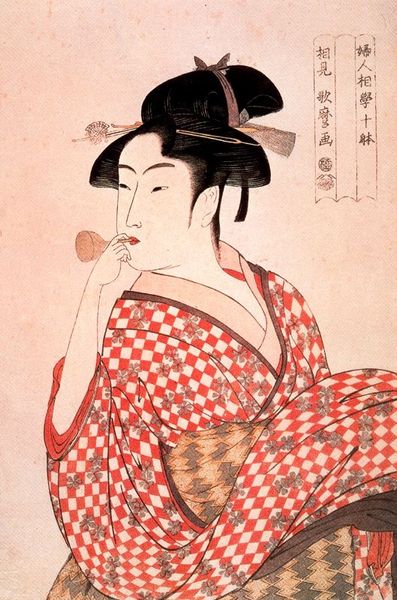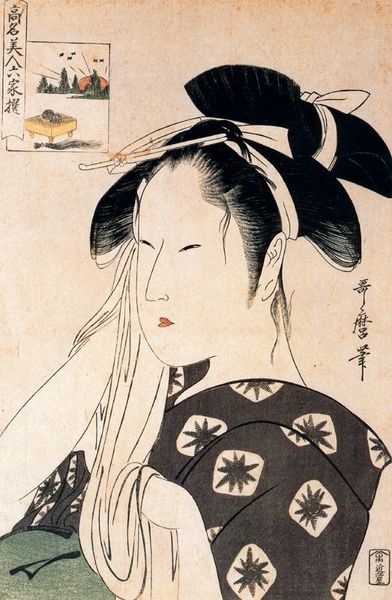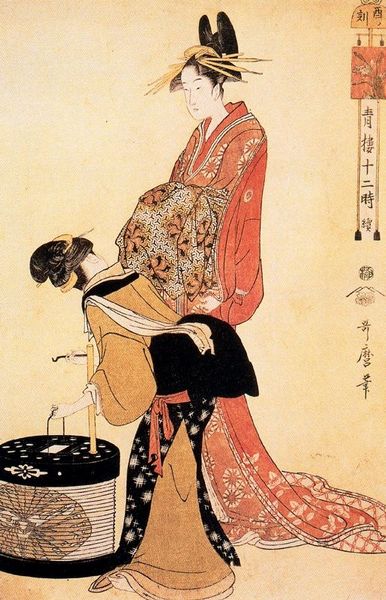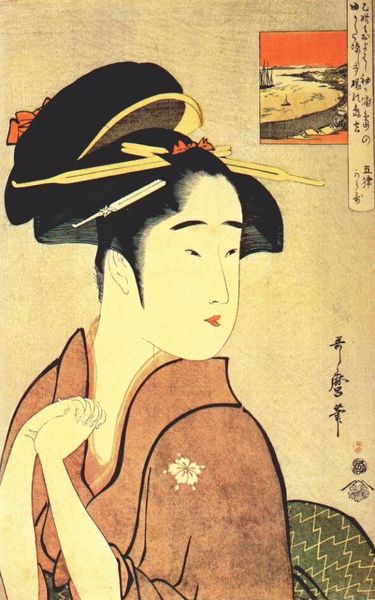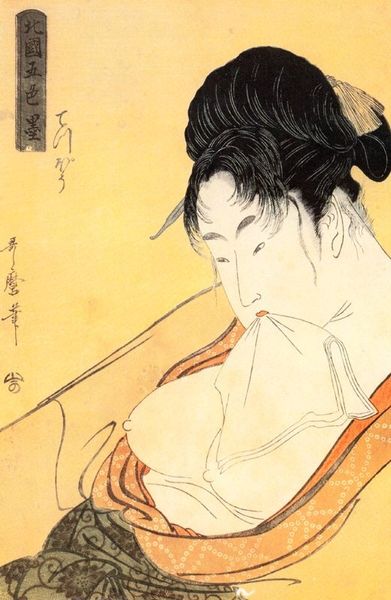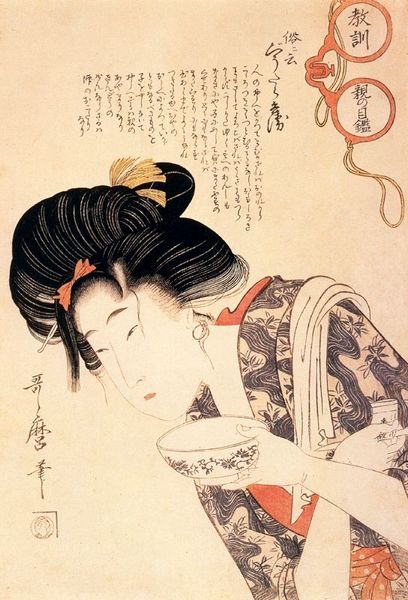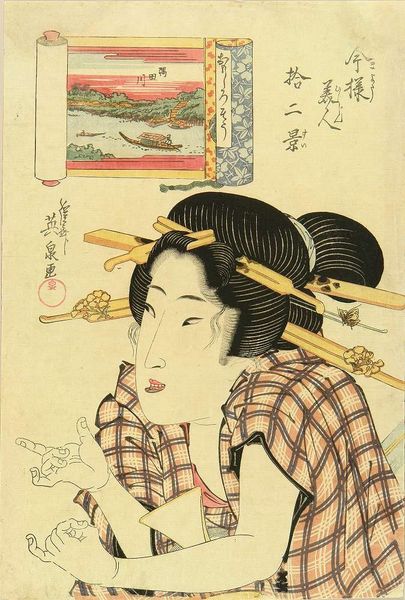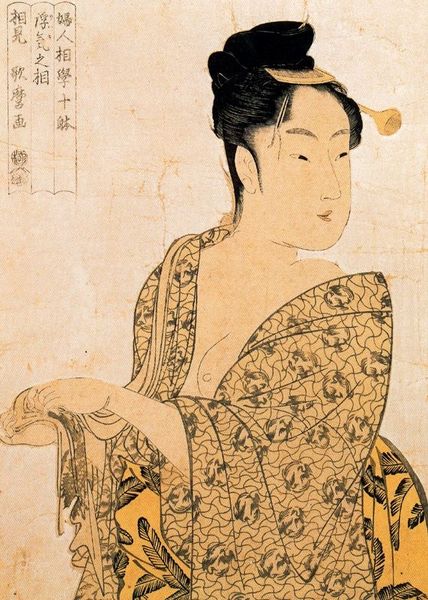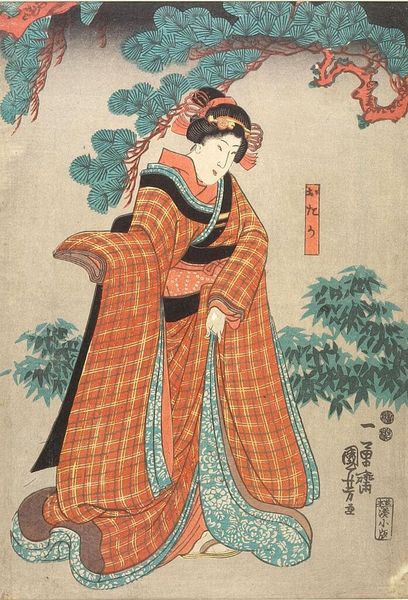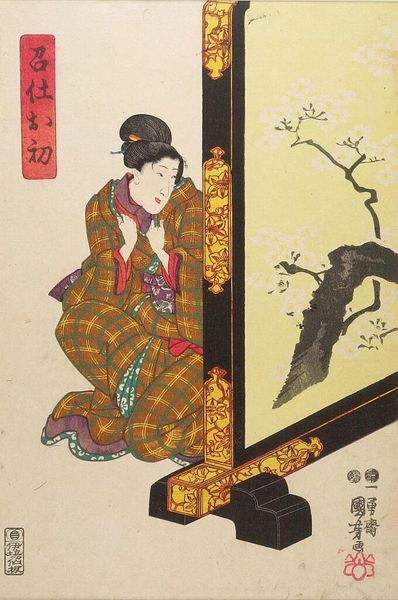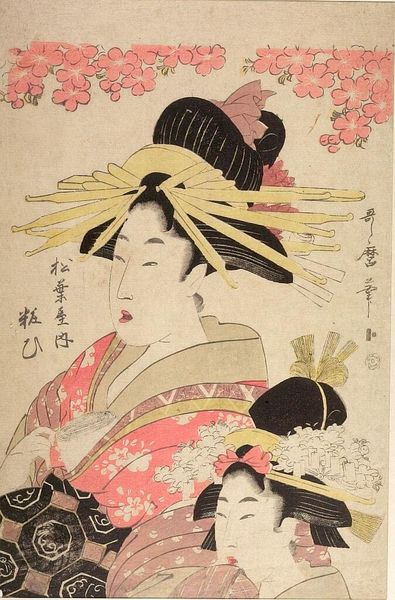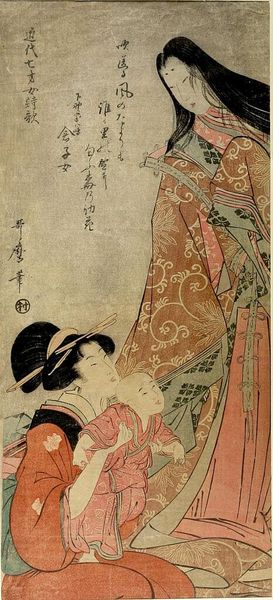
print, woodblock-print
#
portrait
# print
#
asian-art
#
caricature
#
ukiyo-e
#
figuration
#
woodblock-print
Copyright: Public domain
Kitagawa Utamaro made this woodblock print of a courtesan in Japan during the Edo period. These paintings were produced by workshops, so the division of labor reflects the rigid hierarchies of the time. This print comes from the ukiyo-e tradition. It is a genre that flourished from the seventeenth through nineteenth centuries, depicting the fleeting pleasures of urban life, especially the licensed pleasure districts. Utamaro became famous for his portraits of beautiful women, known as bijinga. This particular print creates meaning through visual codes. We can see this figure is a courtesan from her elaborate hairstyle, makeup, and kimono. She epitomizes contemporary ideals of feminine beauty. These prints had a wide audience in Japan’s growing cities and are a window into the social world of the time. Social historians might use these kinds of images to map social values and cultural rituals. By examining these artworks, we can learn how norms were transmitted, reinforced, and sometimes challenged.
Comments
No comments
Be the first to comment and join the conversation on the ultimate creative platform.
